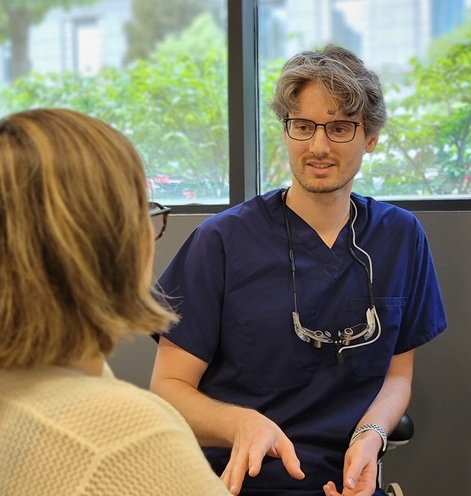Also known as:
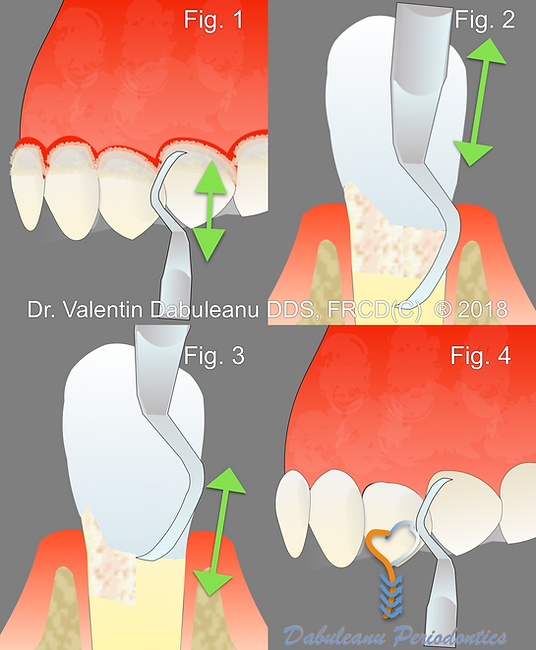
Why is Scaling and Root Planing so important?
A crown lengthening procedure takes approximately one hour. It may be done with local anaesthetic alone, or in combination with sedation (see “Sedation”). Most patients are back at work one day after having had crown lengthening. The majority of healing takes place during the first week, and patients may then resume most of their normal eating and oral hygiene practices (see “Post-Operative Instructions”). The tissue underneath continues to mature however, and full healing of the gums takes 4-6 weeks. The tooth or teeth receiving treatment will look noticeably longer afterwards (Figures 4-6). Dr. Valentin Dabuleanu will see you for a 1-week and 6-week post-operative check before your dentist places the final dental restoration.
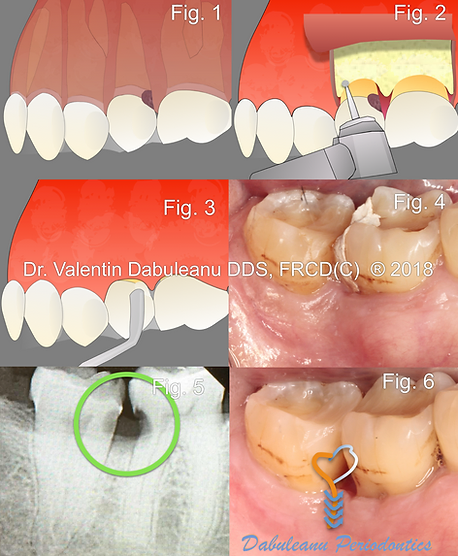
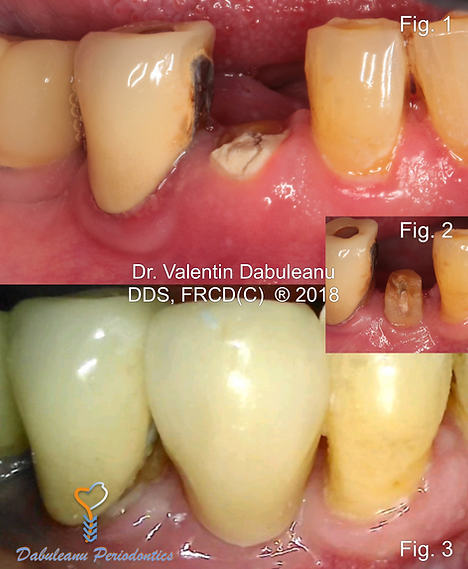
A crown lengthening procedure takes approximately one hour. It may be done with local anaesthetic alone, or in combination with sedation (see “Sedation”). Most patients are back at work one day after having had crown lengthening. The majority of healing takes place during the first week, and patients may then resume most of their normal eating and oral hygiene practices (see “Post-Operative Instructions”). The tissue underneath continues to mature however, and full healing of the gums takes 4-6 weeks. The tooth or teeth receiving treatment will look noticeably longer afterwards. Dr. Valentin Dabuleanu will see you for a 1-week and 6-week post-operative check before your dentist places the final dental restoration or crown.
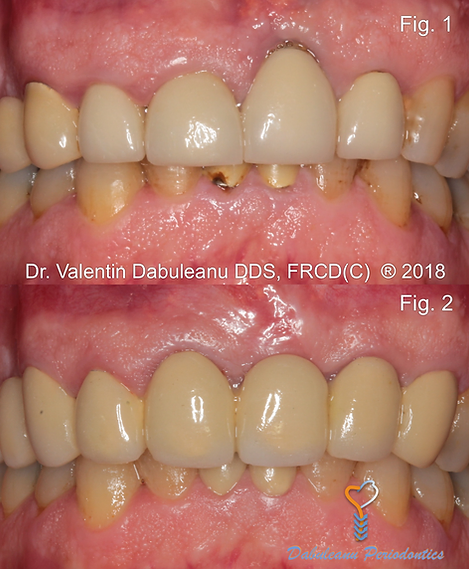
Also known as:
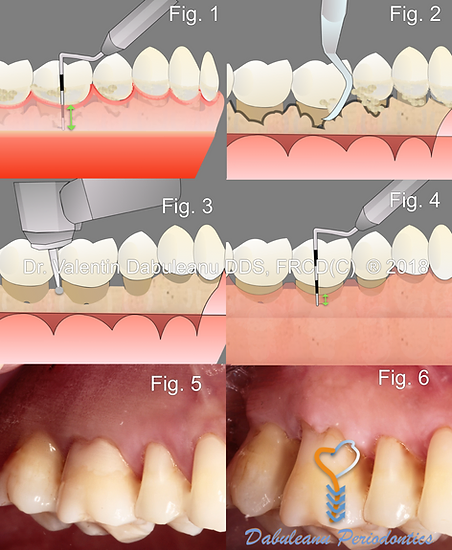
A pocket reduction procedure takes approximately one hour. It may be done with local anaesthetic alone, or in combination with sedation (see “Sedation”). Most patients are back at work one day after having had pocket reduction. The majority of healing takes place during the first week, and patients may then resume most of their normal eating and oral hygiene practices (see “Post-Operative Instructions”). The tissue underneath continues to mature however, and full healing of the gums takes 4-6 weeks. You will be seen for a 1-week and 6-week post-operative check.
Patients who receive osseous surgery to help keep their teeth may notice the following:
Reduced pockets and a combination of daily home oral hygiene as well as professional hygiene maintenance care will help those affected by severe disease to keep their natural teeth.

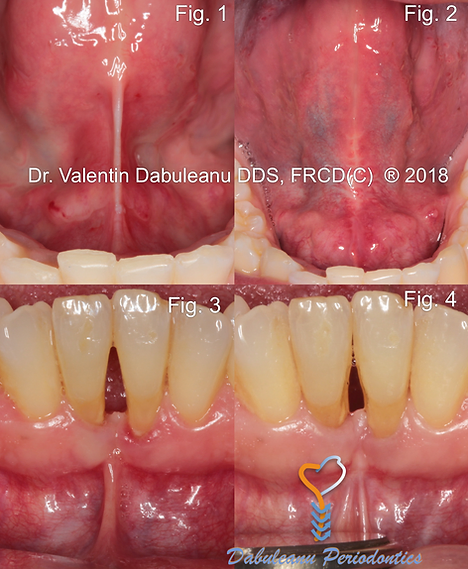
Please refer to the “Receding Gums” section for a description of the causes of gingival recession. Our gingiva serves as a natural defence system that protects against both trauma as well as bacterial invasion. Cases of minor gingival recession do not require any treatment, as the remaining healthy gingiva may be enough to help protect the tooth. The adoption of atraumatic brushing and flossing techniques (see “General Gum Care”) will help prevent the recession from progressing in the future.
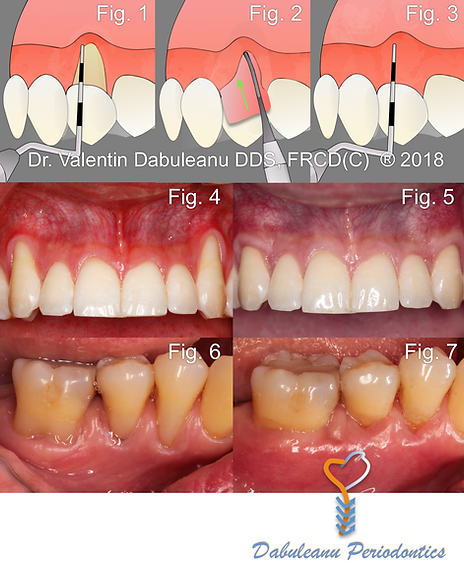
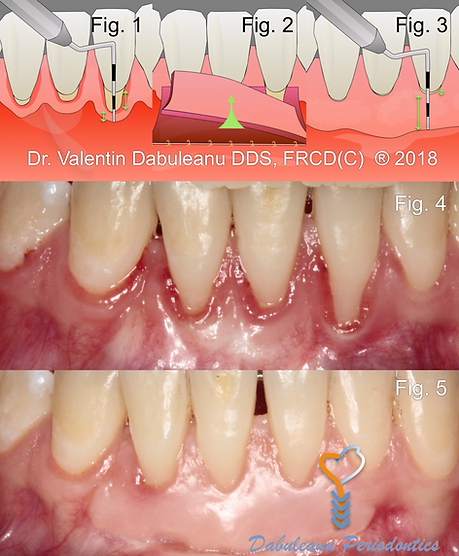
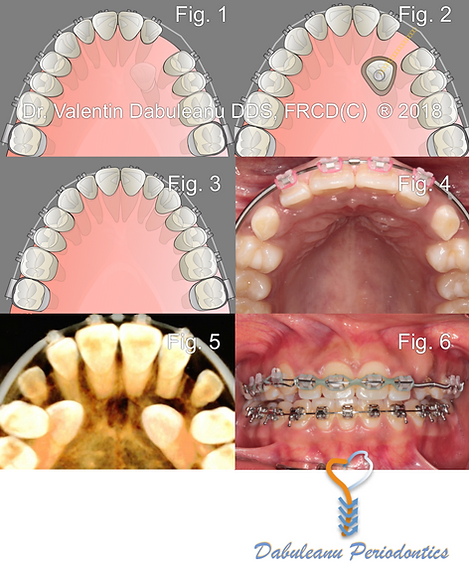
As periodontal disease progresses, pockets deepen and promote the growth of bacteria as well as the spread of infection (see Periodontitis). The supporting bone may begin to degenerate. Regeneration procedures are used to restore lost supporting hard and soft tissue, and can reverse some of the damage caused by periodontal disease. This is in contrast with repair of periodontal tissue, also known as osseous surgery, which was the staple of periodontal treatment for decades (see Osseous Surgery). Dr. Valentin Dabuleanu will help you determine if periodontal regeneration surgery is right for you.
This procedure involves the reflection of the gingival tissue and removal of the majority of disease-causing bacteria within the pocket. This is achieved through a very thorough cleaning of the pocket. Membranes (filters), bone grafts, and tissue-stimulating proteins are then used to encourage the body’s natural ability to regenerate bone and soft tissue (Figures 1-4). The procedure takes approximately one hour. It may be done with local anaesthetic alone, or in combination with sedation (see “Sedation”). Most patients are back at work two days after having had periodontal regeneration surgery. The majority of healing takes place during the first two weeks, and patients may then resume most of their normal eating and oral hygiene practices (see “Post-Operative Instructions”). You will be seen for a 1-week and 4-week post-operative check.
This treatment, when indicated and when combined with a combination of daily home oral hygiene and professional hygiene maintenance care, will result in a significant increase in the chances of keeping your natural teeth (Figure 5). Furthermore, when periodontal disease is arrested, your chances of having other health problems that associated with periodontal disease are decreased (see The Mouth-Body Relationship).

